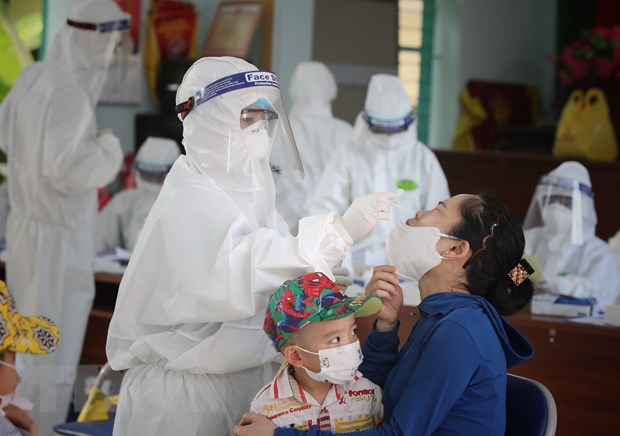 Society
Society

Fit and healthy young people must not become complacent over COVID-19, according to the deputy director of the National Hospital for Tropical Diseases.

|
| A health worker takes samples for a woman in Nếnh Township, Bắc Giang Province. —VNA/VNS Photo |
HÀ NỘI — Fit and healthy young people must not become complacent over COVID-19, according to the deputy director of the National Hospital for Tropical Diseases.
Nguyễn Trung Cấp has warned the virus can still have fatal consequences, and does not discriminate against age or health.
He said: “When infected with SARS-CoV-2, anyone at any age can have severe complications and possibly die."
Globally, many young people considered in good health have succumbed to the virus. These include Li Wenliang, a 34-year-old doctor who reportedly died in Wuhan City; Elham Sheikhi, a 23-year-old Iranian futsal player; Brazilian bodybuilder Victor Luna, 37 and a 33-year-old Ukrainian fitness influencer, Dmitriy Stuzhuk.
Cấp also said statisticians often used the concept of Odds Ratio (OR) to measure the impact of factors of getting the disease or dying compared to the mortality risk of different patient groups.
Statistics on 64,781 severely ill COVID-19 patients at 592 hospitals in the US in 2020 showed that the overall mortality rate was about 20.3 per cent.
From 100 COVID-19 patients who are young and healthy, there would be an estimated 20 deaths while among the same amount of patients, who were over 80 years old, there will about 66 deaths.
Patients with diabetes had a higher risk of death with an odds ratio of 1.9.
It meant that, at the same age, from those who test positive for SARS-CoV-2, there would be about 20 deaths among healthy groups while the number of deaths would be 32 for diabetes patients, he said.
The deputy director stressed that people must seriously follow recommended measures to prevent the spread of the virus.
Currently, Việt Nam is facing the fourth wave of the pandemic, mainly caused by the Indian strain, he added.
The current outbreak is on a larger scale and higher complexity than previous outbreaks because it occurred in many hospitals, where there were many seriously ill patients with underlying diseases plus large industrial zones, he said.
Four COVID-19 related deaths have been recorded since the resurgence in late April.
Cấp said the country had previously experienced three waves of COVID-19 pandemic.
The first wave, caused by the original virus strain from China, resulted in some seriously ill patients but no deaths, he said.
The second wave reportedly hit in Đà Nẵng in several hospitals causing 35 deaths for seriously ill patients with underlying health conditions, he said.
The third wave occurred in Hải Dương Province mainly with the British variant, he said.
During the third wave, although the number of infected people was quite large, the number of severe cases was low and no deaths were reported.
Cấp said a patient could die of COVID-19 because of many factors, including age, underlying diseases, the body’s immune system, the virulence of the virus strain and treatment capabilities of doctors and the health system.
In India currently, where the healthcare system has been overwhelmed, it was not possible to guarantee the efficiency of treatment, he said.
According to Cấp, the developments of the COVID-19 caused by the new strain of virus still needed to be studied further.
However, to minimise the mortality rate, doctors should not only pay attention to elderly patients with underlying diseases but also healthy young people, he said. — VNS